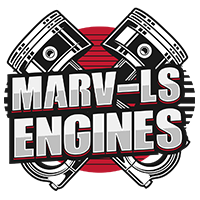
Chevrolet first introduced the LS1 engine in 1997 as part of their release of the new C5 Corvettes. Iron had previously appeared throughout Chevy’s V8 series engines. The LS1 engine making its first appearance in 1997 was Versatile, Lightweight, and extremely powerful. It’s lightweight design was about 85 lbs lighter than any of the iron versions due to its aluminum construction.
Chevrolet’s design options include many different iterations of the LS engines, with many options depending on what you were looking for. The LS came in many different vehicle options, the 4.8, 5.3, 6.0, and 6.2 liter options were available in trucks. The aluminum block LS series engines were also available in trucks, like the 6.2 ls engine in the Cadillac Escalade, and the 6.0 LS engine in the Trailblazer SS.
Cheap Conversions
Chevrolet first introduced the LS1 engine in 1997 as part of their release of the new C5 Corvettes. Iron had previously appeared throughout Chevy’s V8 series engines. The LS1 engine making its first appearance in 1997 was Versatile, Lightweight, and extremely powerful. It’s lightweight design was about 85 lbs lighter than any of the iron versions due to its aluminum construction.
Chevrolet’s design options include many different iterations of the LS engines, with many options depending on what you were looking for. The LS came in many different vehicle options, the 4.8, 5.3, 6.0, and 6.2 liter options were available in trucks. The aluminum block LS series engines were also available in trucks, like the 6.2 ls engine in the Cadillac Escalade, and the 6.0 LS engine in the Trailblazer SS.
High Performance, Small Package
One of the best selling points of Chevrolet’s LS engines is their place in performance cars and road-worthy sports cars. They packed a high-performance V-8 engine into something very small and light. For example, let’s say that you drive a Mazda Miata and you wanted to swap the stock engine for an LS engine. The LS1 engine would be a great option for you. The LS1 is about a hundred pounds heavier than the Miata’s 1.8L, but you’d be gaining a lot more power and torque than the Miata’s engine. That’s just one example of the awesome versatility of this engine. Because of it’s small size and lightweight design, it can be fit into many small engine bays. This makes it perfect to use to boost performance in smaller vehicles that would otherwise feel like sports cars but lack power under the hood.
Engine Strength
Piggybacking off of the previous point about high performance in a small package. Another one of the main reasons for the incredible popularity of the LS engine was that it was simply a great engine platform to build off of. The LS engine block is a Y block design, this means that the engine block is actually shaped like a ‘Y’, and helps to increase rigidity in the main cap area. Chevrolet also made sure that the bolts on both the top and bottom of the LS series engines were strong enough and long enough to not give the end-user problems down the road.
Reliability
Although the LS series engines were officially retired by Chevrolet in 2017, as the LS engine fizzled out with the last of it’s trucks produced in that year, the last twenty years of history with the LS engine have proven it’s reliability among customers. Because of the longstanding history of the LS engine producing incredible power and performance for a fraction of the weight, size and cost, Chevrolet has cemented the LS’ place in automotive history.
Whether you’re looking for a build-it-yourself at your own pace, or a high performance racecourse engine build, Chevrolet’s LS engine is perfect for any enthusiast for many different applications – from Jeep Wranglers to Mustangs and almost everything in between.
